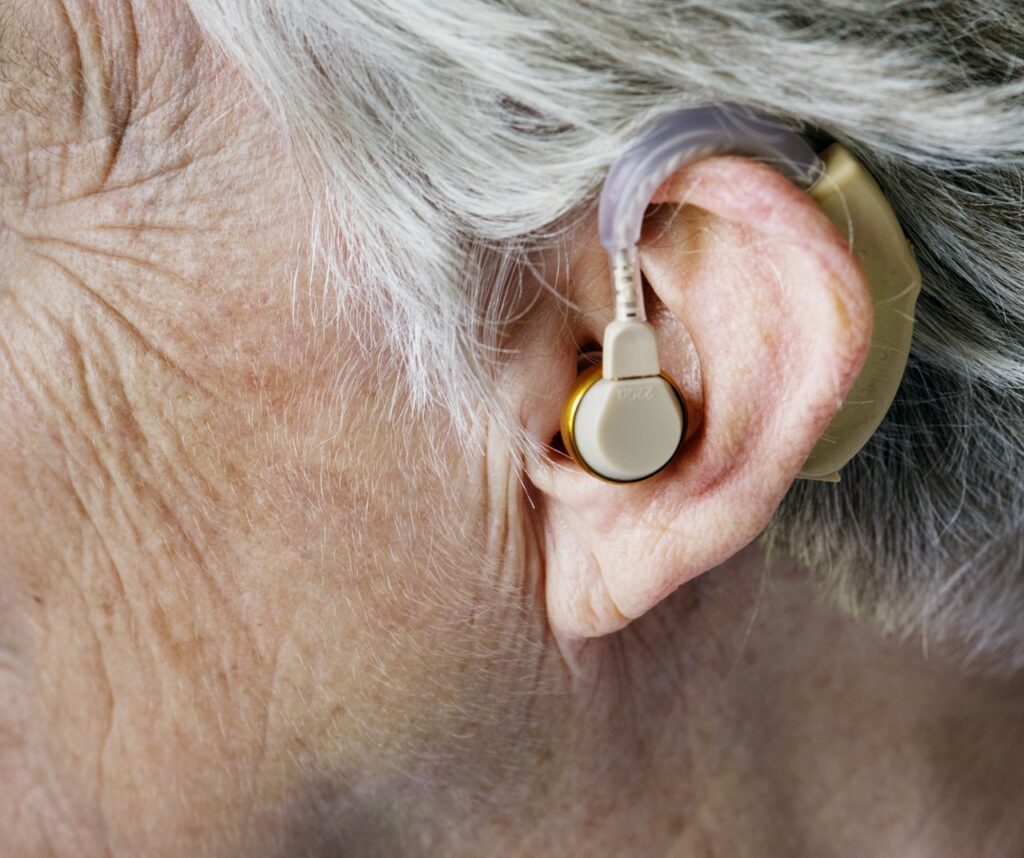Hearing loss is one of the most prevalent diseases along with heart disease and arthritis. It affects children and adults alike.
The Hearing Loss Association of America reported that around 48 million Americans or an estimated 20% have a certain degree of hearing loss. The prevalence of hearing loss in adults starts between the age of 20 and 69.
The age is also considered as the strongest hearing loss predictor. Elderly people who are 60 to 69 years of age are more prone to developing hearing loss than younger people.
It has also been discovered that 25% of American adults had tinnitus for at least 5 minutes. This has been reported last year.
For adult men between the age of 20 to 69, the possibility of developing hearing loss is more common than women who belong in the same age bracket. On the other hand, women, as they age, have more trouble hearing at lower frequencies than men.
Hearing loss does not only occur in adults but in children as well. Due to the prevalence of hearing loss in the United States, 2 to 3 of every 1000 children have been born with hearing loss. This impairment occurs in one or both ears.
There are more than 90% of children born with hearing loss came from hearing parents. By the time children go to school, hearing loss starts to develop at the age of 6. In fact, 30 million American children have hearing loss in both ears at the age of 12 and older.
Hearing Aids And Statistics

Wearing hearing aids is a common solution for the prevalence of hearing loss. As estimated by the National Institute of Deafness and Other Communication Disorders (NIDCD), approximately 28.8 million adults in the US have benefitted from hearing aids.
In 2016 alone, around 3.65 million hearing aids had been dispensed. Elderly people who are 70 years of age are known to wear a hearing aid for the first time.
Although some people are already aware of their condition, they do not immediately seek help from doctors. Better Hearing Institute found out that people who have hearing loss have to wait 15 years before they decide to wear hearing aids. The prices of hearing aids range from $1000 to $4000. Despite the growing number of people wearing hearing aids, only 16% used the device.
With regard to the financial impact of hearing loss, a survey conducted by the Better Hearing Institute revealed that because of the prevalence of hearing loss in the US, the health sector spends $100 billion per year for hearing loss treatment.
Minimizing the Prevalence of Hearing Loss Through Treatment
When it comes to providing treatment to hearing loss, there are many options to explore that will restore your hearing or treat the condition. While the most common remedies include wearing hearing aids or using amplification like bone conduction implants, there are other effective means to address the problem. The type of treatment to use will depend on the form of hearing loss you experience.
If it is sensorineural hearing loss, which is caused by inner ear hair cells damage, the condition might be treated by wearing a hearing aid or considering cochlear implants. Early diagnosis is also recommended to ensure the best outcome.
Getting Professional Help
You will need to undergo a comprehensive evaluation so the doctors will know the amount of hearing you have in each ear. You will also need to visit an audiologist so you will be given hearing testing.
An audiologist is a qualified individual who holds a master’s or doctorate degree in hearing loss rehabilitation and diagnosis. Some audiologists are known for specializing in hearing instruments while others specialize in cochlear implants, pediatric audiology, educational audiology and more.
The result of audiological testing will be used as the basis for the treatment that will be given to the patient.
Treatment Options

When undergoing a comprehensive hearing evaluation, you will need to spend 30 to 45 minutes to complete the evaluation process. It is a non-invasive and quick exam that will determine which treatment path you need to take.
First, a series of questions will be asked to know your case history. The doctor has to identify the symptoms of hearing loss that you experience. Once the objective test results come out, the doctor will explore the most appropriate and effective course of treatment.
After knowing your case history, the doctor will proceed with otoscopic inspection, which is a visual inspection that determines any issues or abnormalities in your outer ear. The inspection is a way to determine if there is something wrong with your eardrum or other parts of your ears.
After the visual inspection, the audiologist will also measure the amount of your hearing in each ear. The test will be conducted in a quiet environment. There will be a series of tones at different frequencies or pitches. These tones are the most critical components for understanding speech. The doctor will ask you to respond to these test signals by pushing a button, raising your hand or any form of speech signals.
It is also possible that you will need further tests to know your ability to understand sentences or words at different levels. The tests may include tympanometry, auditory system testing and many others.
Types of Hearing Loss and Recommendations
Hearing loss can be conductive, sensorineural, or mixed. The type of hearing loss you have can be determined by comparing bone and air conduction thresholds. You experience the
prevalence of sensorineural hearing loss if your bone and air conduction thresholds are found to be equal. You are experiencing a conductive hearing loss if your bone conduction thresholds are just within the normal range. In this case, however, you air conduction threshold is not normal.
There are instances when you can hear, but you can’t understand. This is the common symptoms of hearing loss. There are more cases of hearing loss with high frequency than low frequency. Since consonants are a significant part of speech understanding, the inability to hear consonants says a lot about your hearing loss condition.
For this condition, you will need to undergo a comprehensive hearing evaluation. Further testings will also be conducted to find out about the suitable treatment to consider. Your family member will also be given additional information so they will know your needs. It will also help them to be aware of the proper way to protect your hearing so as not to worsen the condition.
The Use of Hearing Aids: Basic and Advanced

Although there are various hearing loss treatments to explore, wearing hearing aid is often the most common option depending on the prevalence of noise-induced hearing loss. There are basic hearing aids and advanced hearing aids.
With regard to basic digital hearing aids, you will be required to manually adjust the device based on listening situations. It comes with buttons where you can turn the volume up or down. You can also push a button to reduce the noise which comes from behind. Basic hearing aids might also be computer programmable. They may have limited adjustments, but they can improve your ability to hear.
The advanced digital hearing aid is equipped with sophisticated features like Bluetooth interface, data logging, digital noise reduction, directional microphone systems and more. Even with the prevalence of hearing loss, many individuals can still manage to live a normal life because of advanced technology.
Doctors recommend early diagnosis to prevent hearing loss symptoms from getting worse. More effective treatment will also be given when hearing loss is diagnosed as soon as possible.




